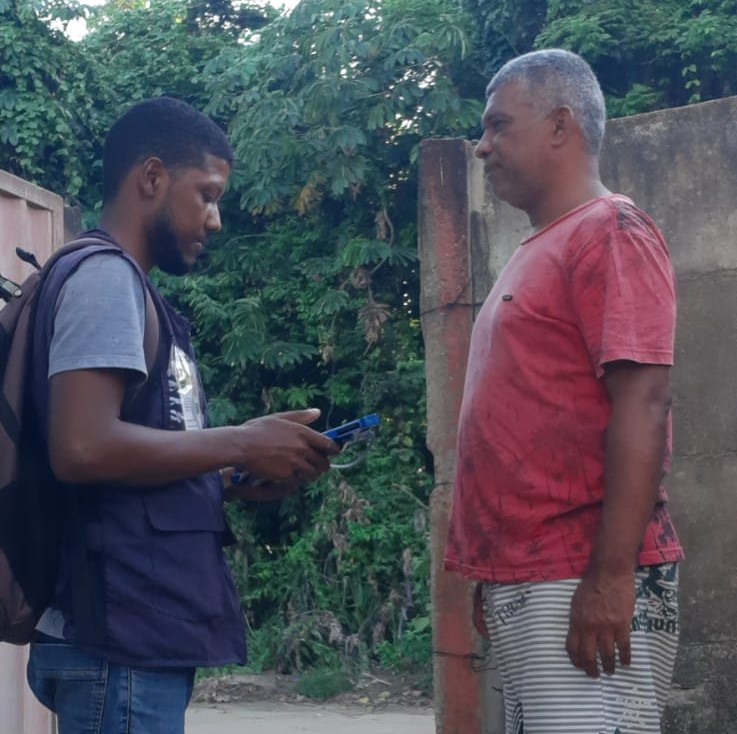Slums on the Map: in the final stretch of 2022 Census, IBGE takes actions in agglomerates of Salvador and interior
March 30, 2023 10h09 | Last Updated: April 10, 2023 16h51
In Bahia, one out of ten occupied households (10.6% or nearly 470 thousand in 2019, according to the 2022 Census Territorial Base) are in areas of subnormal agglomerates (slums or the like). In Salvador, the proportion reaches four out of 10 households located in slums (41.8% or slightly more than 375 thousand, in absolute numbers), the third one among the capitals and the tenth one if all the municipalities with agglomerates are considered.
Due to their demographic weight, particular characteristics and specific and urgent demands, slums should be “on the map” and in the portray of the 2022 Census, with as much details as possible. As a result, it is even more important to guarantee that the non-answer in the survey is less than 5.0% of the households in these places.
It was right the reduction of non-answers in subnormal agglomerates that took the IBGE, in a partnership with CUFA (Single Slum Center) and Data Favela, to launch the action Slums on the Map last Saturday (March 25, 2023).
Bahia was one of the states that adhered to the mobilization, by taking data collection and awareness actions of the population, especially in slum areas and the like in the capital, supported by CUFA Bahia, and in the interior.
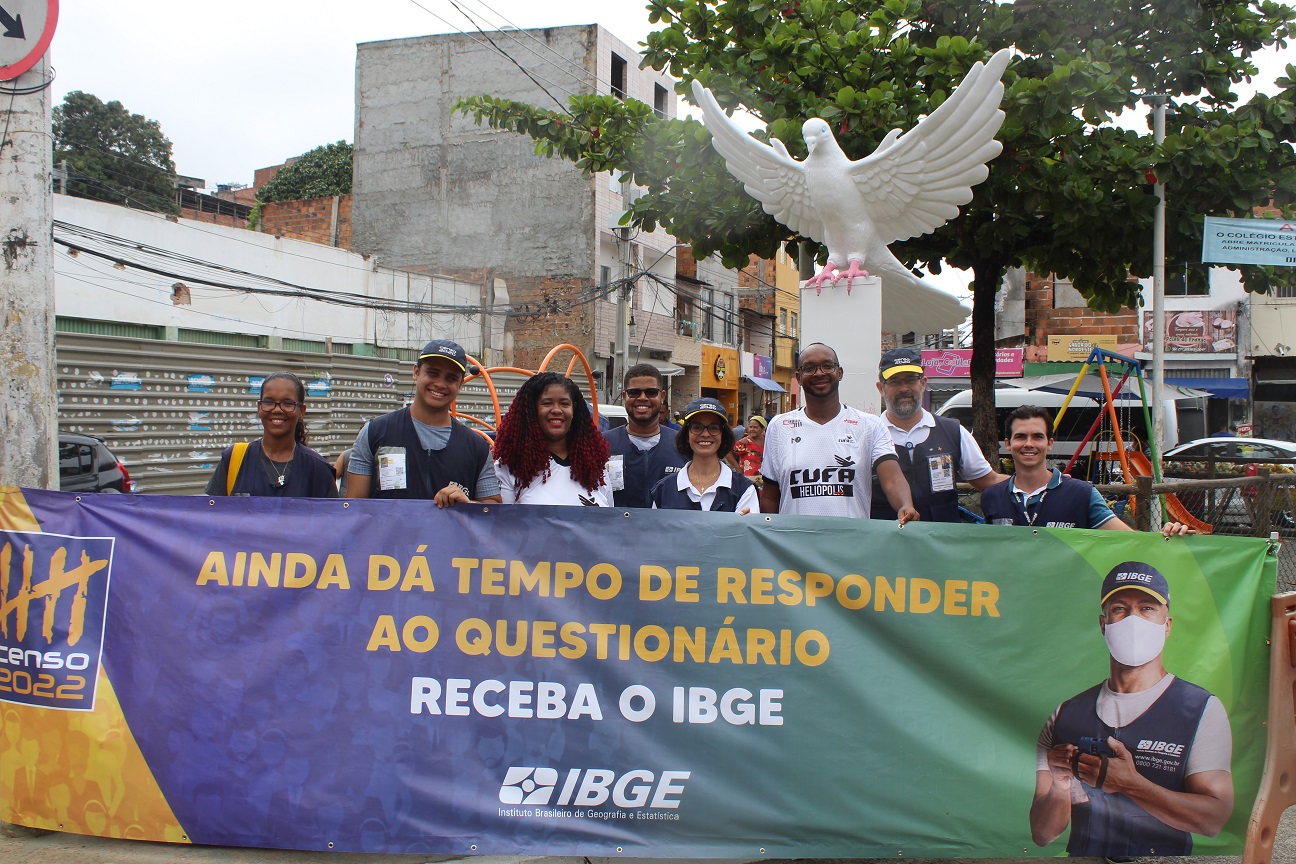
In Salvador, action occurred in the neighborhood of Paz and it was widely covered by the media
In the capital of Bahia, the mobilization for the slums on the map occurred in the central square of the neighborhood of Paz, a place with a great movement of people and shops.
That region began to be populated in the 1980s and it was originally called Malvinas invasion, receiving its current name in the following decade. According to a study based on the 2010 Census, it had nearly 19 thousand residents in the last survey, 13 years ago.
The action on March 25 counted with the presence of André Urpia, the Superintendent of the IBGE in Bahia, who was personally involved exhibiting the Census banner in the neighborhood and distributing leaflets.
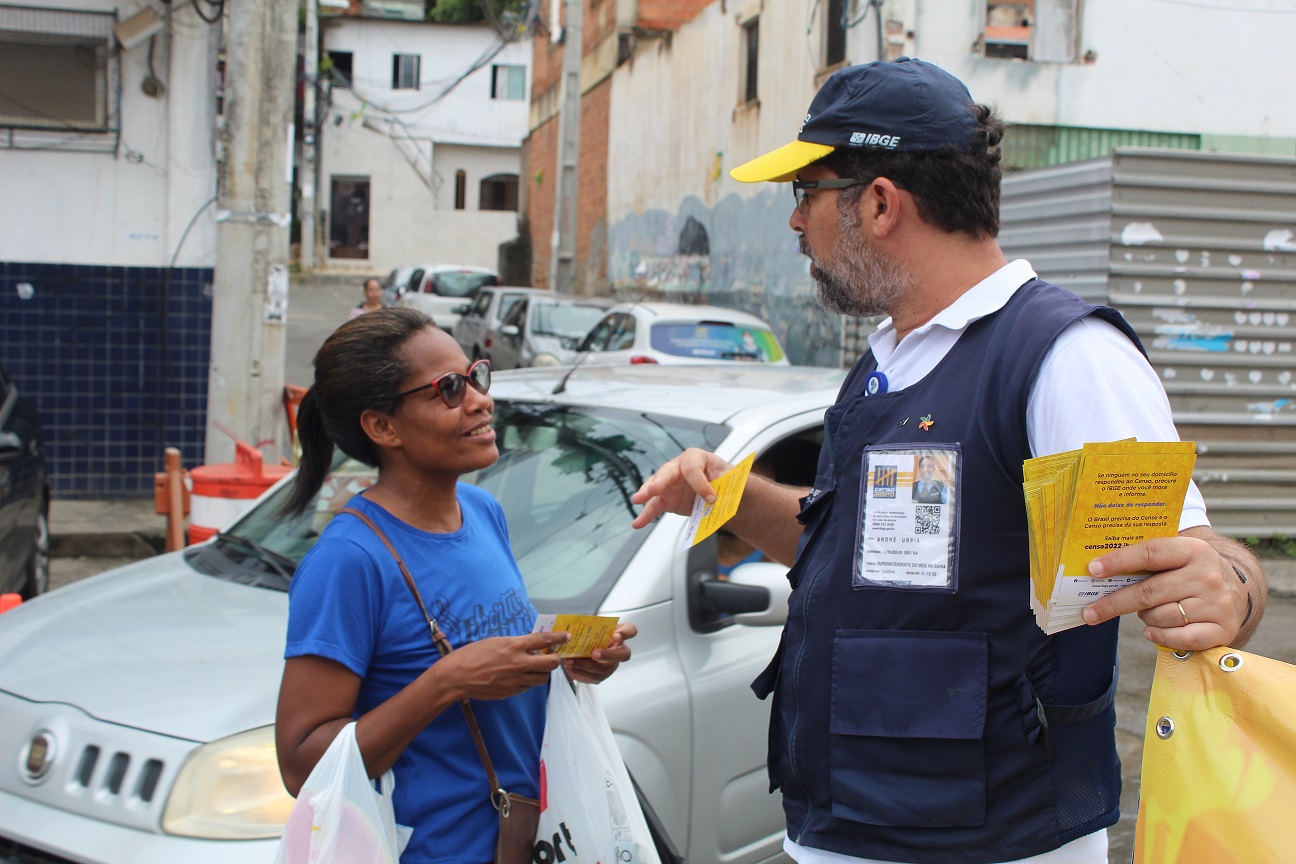
Rita Sacramento, President of CUFA Bahia, and Márcio Lima, National Vice-president of that institution, also participated in the action by helping enumerator Tauan Soares to collect the data in households that had not answered the Census yet.
In an Instagram post, the official profile of CUFA-BA reinforced the importance of the mobilization: the Census is key to have public policies based on the needs of our territories. It is to put slums on the Brazilian map.”
A team of TV Bahia, an affiliate of the Globo Network in Salvador, followed the work of Soares as well. The story on the action in the neighborhood of Paz was broadcast in the two major TV news on Saturday, Bahia Meio-Dia and BATV (in the early evening).
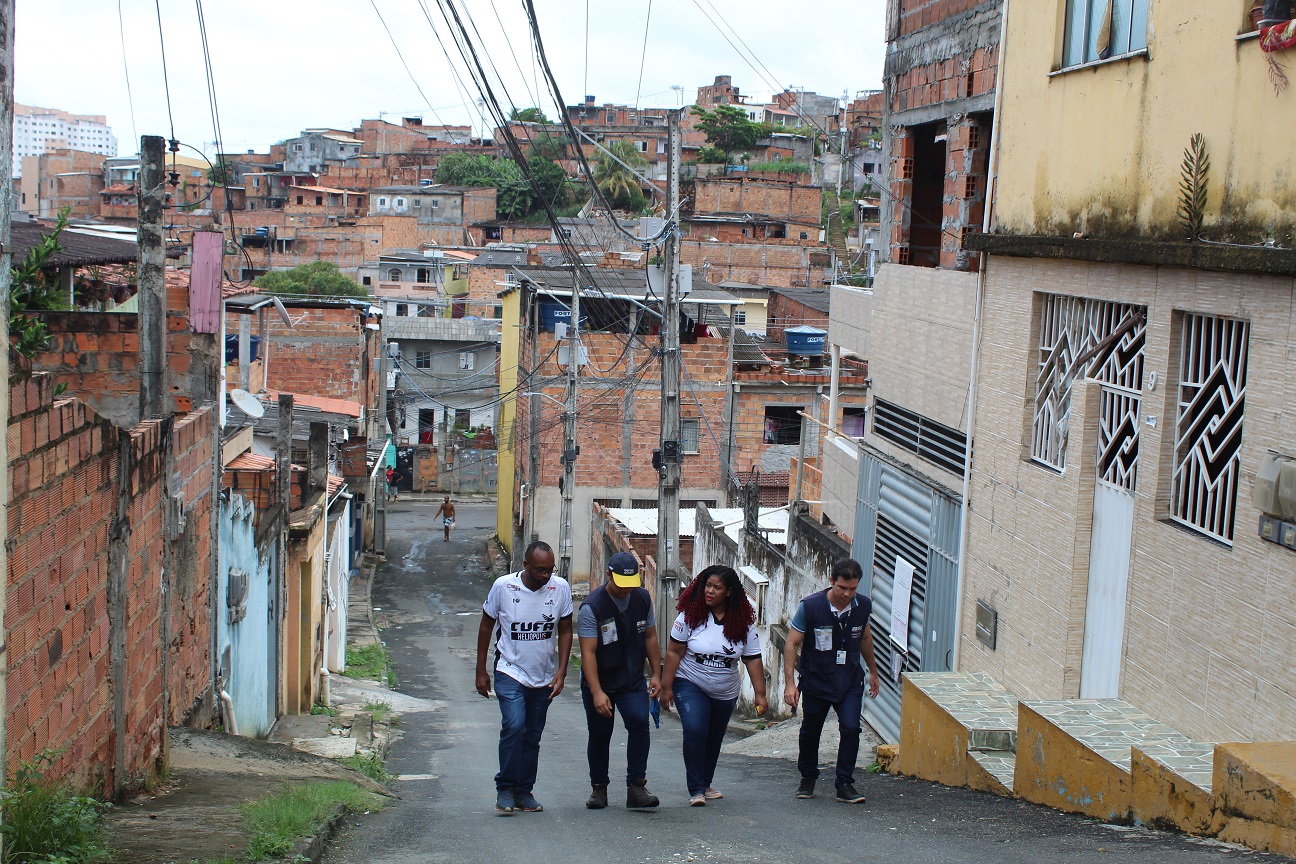
counted with the support of representives of CUFA in Bahia
As the Coordinator of Census Dissemination in Bahia, Mariana Viveiros reinforced the request of support to the community, by going to a charity bazaar organized by the association of residents, where Viveiros, Area Coordinator Thiago Balesteiro and Municipal Census Agent Gilmar Santos distributed leaflets and talked with local leaders.
Launched in the previous day with stories in newspapers A Tarde and Massa! and lives in radios BandNews and Sociedade, the dissemination extended to Monday (March 27), when Viveiros went live in Jornal da Manhã, a morning news in TV Bahia.
Focus on agglomerates also advances data collection in the interior
Besides the capital, the reduction of non-answers in subnormal agglomerates also fostered the data collection in the weekend in the interior of Bahia.
In Santo Antônio de Jesus (far 187 km from Salvador), in the Recôncavo, even the heavy rain did not discourage the enumerator who worked in the neighborhood of São Paulo and in Canal Street. According to the Area Coordinator, Neilton Andrade, the action looked for residents absent in the first visits or who chose to answer on-line, but let the eticket expire.
“The teams were key to the success of the mobilization, mainly for having agreed to go the field in a rainy weekend,” said Andrade.
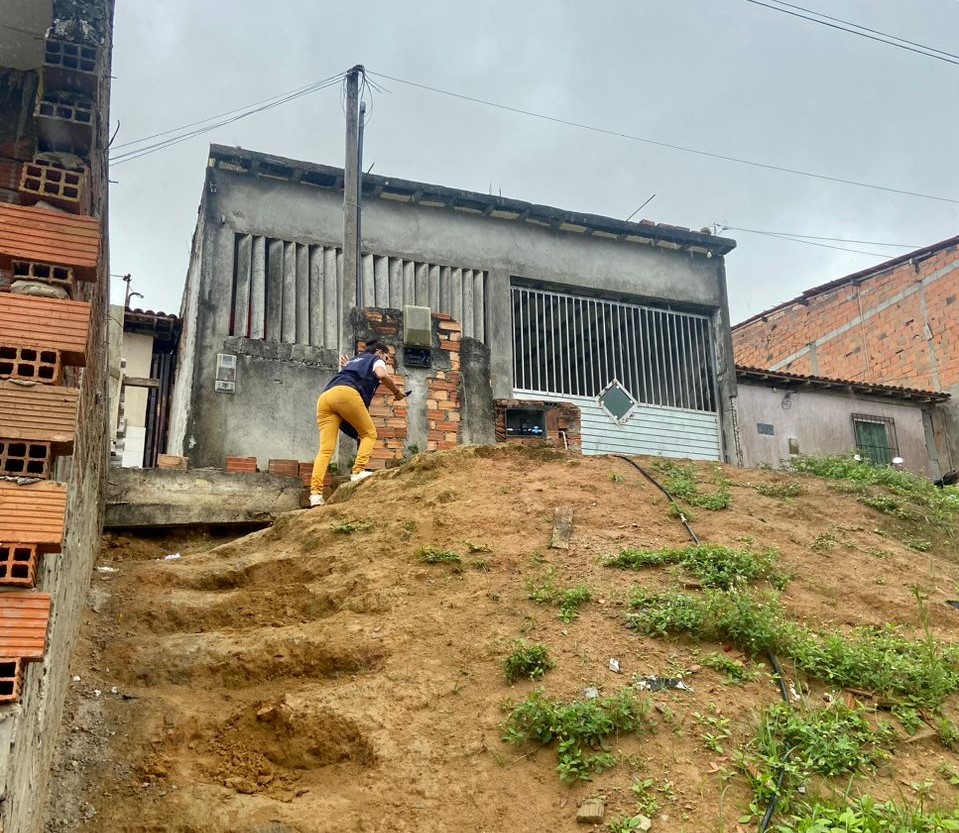
In Porto Seguro, the mobilization occurred in the community of Mirante do Rio Verde. The only one in Bahia with non-answers in more than 50% of the households, the area plummeted to a rate between 5.0% and 10.0% in two weekends.
